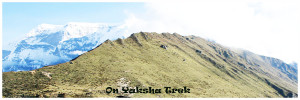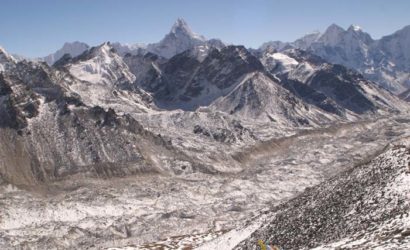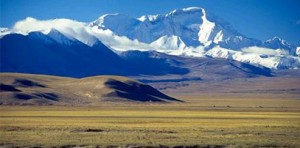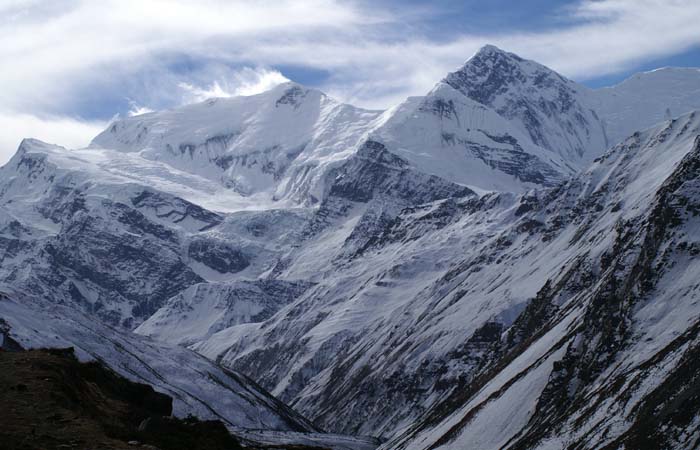Overview
This is one of the popular treks that passes the base of Mount Jumolhari and Jangothang. The circuit of this trek takes you to some beautiful high-altitude passes and the camps of yak herders. You would get some majestic scenes of the higher Himalayas, which also include Jichu Drake. On this trek, you will see blue sheep and other wildlife.
The trek begins at Satsam Chorten and passes via Thangthagaka, Jangothang, where we get the chance to see some beautiful scenic valleys, Dhumzo, Thombushong, which puts you in the heart of the forest of oak, birch, and rhododendron, and finally we end the trek at Zankepang, not before passing through Thumbula Pass at nearly 4000 meters.
As a part of all our trekking packages, you also get to sample a taste of life in Bhutan with the different short excursions to places of historical and cultural value like the Dzong, monasteries, libraries, and traditional production centers.
All in all, the Yaksha Trek, with its trek into the wild of scenic Bhutan and its excursions into cultural life, will linger on for eternity in your heart.
Itinerary
You will be met at the airport by a representative of Yak Holidays. After lunch, it is a visit to an ancient watch tower, Ta Dzong, after which it is Rimpung Dzong, meaning “Heap of Jewels”, built by Shabdrung Ngawang Namgyal.
(Altitude 2320m, distance 58 kilometers, driving time 1 hour)
The day begins with a drive to Satsam Chorten, and from there, we walk a short distance to Taktsang Monastery.
(Distance: 17 km; Time: 5 to 6 hours (770m ascent & 10m descent).
We begin the day by first driving to Drukgyal Dzong, which was built in 659 by Shabdrung Ngawang Namyal, where we get a majestic view of Mt. Jhomolhari. We begin our trek here by following the Paro River till we reach Shana, where we camp for the night.
(Distance 22 km, time 7 to 8 hours, ascent 770 m, descent 10 m)
We begin the day’s walk by following a trail along a river that is heavily forested with a few sporadic farm houses, and after passing a pass known as Tremo La, which leads to Tibet, we get to a meadow with a stone shelter to camp for the night.
(Distance 19 km; time 5 to 6 hours; elevation gain 480m)
On passing an army post, the forest slowly begins to fade, and we slowly begin our climb into a beautiful valley. After passing through Tegethang, which is the winter abode of the Yak, we finally arrive at our night’s camp.
It is a day of rest to get acclimatized to the high altitude we are at. We can use the day to see the scintillating scenery. For the day’s activities, there are three options in front of you. There is a trek to Jumolhari Glacier that takes about four and a half hours round trip, or a walk to Jichu Drak Glacier that is about three hours round trip, or a climb uphill to the mountain between Jumolhari and Jichu Drake, which is at a height of 5200 meters. This is an 8-hour trip.
(Highest point: 4900m; time: 7–8 hours; distance: 16 km; difficulty level: moderate)
Today’s part of the trek is one of the most difficult; we would walk a distance of 16 km to get to our day’s camp by passing over Bonte La Pass at 4900 KM. We are refreshed by the views of Jhomolhari, Jitchu Drake, and Jhomolhari Camp site.
(Highest point: 4550m Tagalun Pass; time: 5–6 hours; distance: 14 km; difficulty level: moderate)
We begin the day’s trek through a forest of oak, birch, and rhododendron covered in moss that finally gives way to a meadow of huge juniper trees. We get short glimpses of Jhomolhari, then our campsite comes into view, where we stop for the night.
(Highest point: 4300 Thumbula Pass; time: approximately 7 to 8 hours; distance: 18 km; difficulty level: moderate)
We begin the day’s trek by getting through Thombula. That takes about half an hour. On the trek, we are able to see many mountain peaks, Jo Drake being the closest. We camped for about one and a half hours from the army camp.
We walk for about two hours to the road, where we see off your support staff and where the trek ends as well. You are then driven to Thimphu, and after lunch, you are free to stroll the streets of the city and take photographs.
We begin the day’s activities with a visit to the National Memorial Chorten, built in 1974, and then to a nunnery known as Dupthop LhakKhang. Then it is a visit to the National Library, the Painting School of Traditional Art, the Traditional Medicine Institute of ancient practices, the Royal Silver Smiths at Lungtenzampa, a Bhutanese paper factory, a visit to the Handicraft Emporium, and other street shopping activities in Thimphu.
We begin the day’s activities by first visiting the Folk Heritage Museum and then the Textile Museum, ChangangKha Lhakhang, the Philatelic Office, watching Silver Smiths at work, and finally, the handmade paper factory.
We first drive to Punakha through the Dochula pass, and if the weather permits, we stop at the pass to view the High Himalayas. We also stop to view Chimi Lhakhang, the Temple of Fertility, and visit Punakha Dzong, situated between the male river, Pho Chu, and the female river, Mo Chu.
On completion of breakfast, we drive back to Thimphu, and after lunch, you are free to walk the streets of the capital, shopping and photographing.
Today, you are driven to the airport in Paro, where you are given your farewell for your return trip home.
US $3512 Per Person
Cost Includes
- All airport to hotel to airport transfers.
- All hotel stay in Paro and Thimphu.
- Local English speaking guide and porter(s).
- Staff insurances
- Use of trek pack (i.e. sleeping bag, down/fiber jacket, and duffel/kit bag).
Cost Excludes
- International airfare.
- Bhutan entry visa fee.
- Travel or trek insurance.
- Gratitude or tips (allow $3 per day per person)
The best times to trek in Bhutan are in the months of April and October. The weather is very unpredictable and the chance of a completely blue sky is very rare. You can do the low-altitude treks and other routes for other seasons as well.
Trekking in Bhutan requires you to be physically fit. It is not necessary for you to be in great shape. Any normal person without a disability can do the trek with relative ease. A trekker gains approximately 500 meters in a day. For strenuous treks like Snow Man Trek, Jumolhari, or Laya-Gasa Trek, you need to be mentally prepared besides being physically fit.
At least two of you must embark on any of the trekking expeditions in Bhutan.
No, you do not need any special equipment. All the necessary equipment for the trek is provided by the trekking company itself. Except you need to bring your personal belongings.
The following would be the things you should bring if you feel like it:
- Strong, comfortable trekking boots; water-resistant for the rainy periods, June to August
- Sunscreen cream
- Flash light
- Raincoat (especially during rainy seasons, from June to August)
- Head gear/hat/cap
- Sun and rain protection
- (During the trek, boiled water is available at all times)
- In case of altitude sickness, take aspirin
- Lots of socks
- Warm clothes
Personal
- Strong normal clothing (seasonally appropriate)
- Cotton is preferred for summer, with woolen clothing for evenings and winter
- Strong, comfortable trekking boots, water resistant for the rainy periods (June to August)
Yes, it is absolutely safe as your security and personal protection are taken care of by the trekking agency, which is licensed by the Government of Bhutan. No, personal trekking or visits to the country are allowed without a package being booked by one. So, once you have paid for your package, you are a protected person within the country from any bodily harm. You have a local with you at all times.
It is requested that you get yourself insured for trekking in Bhutan. The insurance should cover medical treatment, theft and rescue—helicopter rescue operation:
There are no helicopters available in Bhutan. As such, immediate rescue by helicopter is not possible as there will be so many formalities involved in bringing a helicopter from India. While you are trekking in Bhutan, if you happen to fall sick, the guide will relay the message to us and we will act appropriately.
Except for Indians, Bangladeshis, and Maldivians, all other nationalities require a visa to enter Bhutan.
All visas are issued from Thimphu, and visas are only issued to tourists booked with a licensed local tour operator directly or through a foreign travel agent. Visas are issued only when you arrive in the country, either at Paro Airport or (if by road) at Phuentsholing, Gelephu, or Samdrup Jongkhar.
To enable us to process your visa on time on your behalf and get the visa clearance for you, your visa application must reach us at least 60 days before the date of your travel. The immigration department will then issue a visa authorization letter to enable you to board the Druk Air flight to Bhutan. The actual visa will be stamped on your passport when you arrive at the four entry points.
The visa fee is $40 USD.
For your booking to be processed, we will require a non-refundable deposit of $300, which can be made by bank transfer or online payment. The balance of payment should be made a week before your arrival. Booking should be made sixty days in advance for your visa to be approved by the immigration authorities of Bhutan.
The following information is needed to process your trekking package and visa to the country:
- Name exactly as it appears on the passport
- Passport number
- Expiry date
- Place of issue
- Nationality
- Date of birth
- Occupation
- Emergency contact names and phone numbers
- Photocopy of a passport
- Details regarding any medical or dietary requirements
- Your arrival details (time, date, flight number, and airline)
The above information can be sent electronically via email attachment.
You will typically walk 4 to 9 miles (5 to 8 hours) every day. Some days may be rest days for impromptu exploration. In high and steep areas, you may move more slowly. You will carry only a light pack. All the rest are carried by donkeys, mules, and yaks.
Altitude sickness, often known as Acute Mountain Sickness (AMS), is a particularly important medical consideration while trekking in Bhutan. Altitude sickness means the effect of altitude on those who ascend too rapidly to elevations above 3000 meters. The initial symptoms of AMS are as follows:
- Nausea
- Vomiting
- Loss of appetite
- Insomnia or sleeplessness
- Persistent headaches
- Dizziness
- Light-headedness
- Confusion
- Disorientation
- Drunken gait
- Weakness
- Fatigue
- Lassitude
- Heavy legs
- Slight swelling of hands and face
- Breathlessness and breathing irregularly
- Reduced urine output
These symptoms are to be taken very seriously. In the event of the appearance of any of the above symptoms, any further ascent should be reconsidered; otherwise more serious problems can occur, which can cause death, sometimes within a few hours. The only cure for altitude sickness is to descend to a lower elevation immediately. Acclimatization by ascending to no more than 300 to 500 meters per day above 3000 meters and proper rest are the best methods for the prevention of AMS.
You will have three meals each day, plus snacks. Breakfast usually includes a choice of toast, eggs, hot cereal, and hot beverages. Lunch may be prepared hot or served as a picnic, always with a choice of beverages. Dinner is a major meal with 5–6 main courses, usually including salad and/or soup, several vegetable dishes, and a meat dish. There will be a fruit dessert and hot beverages. We gladly cater to vegetarians. We combine elements of Western and Asian cuisines.
In a typical camping trek, each pair of trekkers will sleep in a spacious mountain tent, which is durable from rain, flies, and insects and is fully insect netted. The tent is fitted with foam mattresses.
Please have them contact at any of the following numbers:
- Landlines – 977-1-4445475 or 977-1-4014609
- Cells – 977-9851032108, 977-9849144717 or 977-9841250258
- We frequently check our mails throughout the day, so you could write to us at: info@green-lotus-trekking.com







Recent Comments